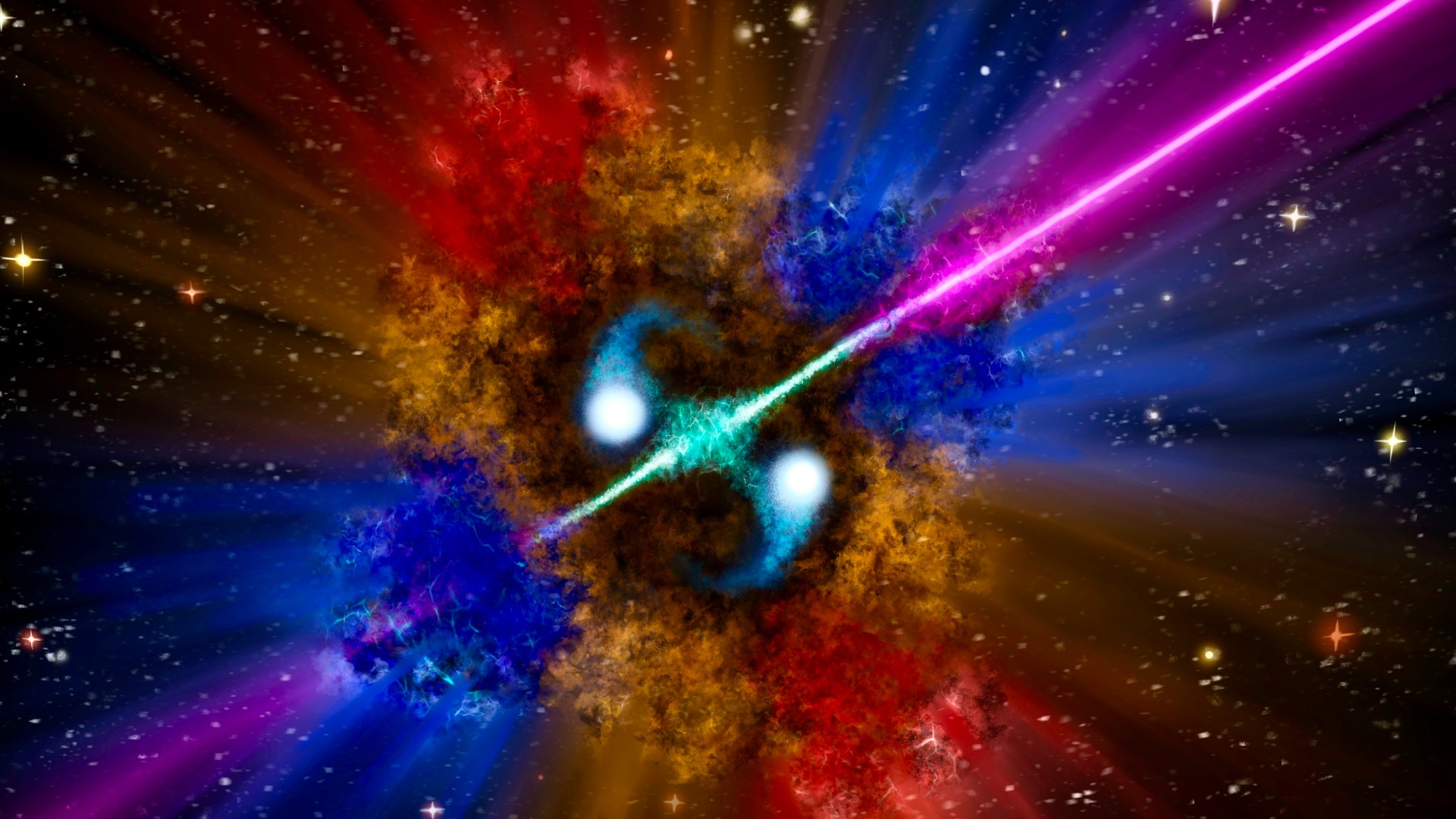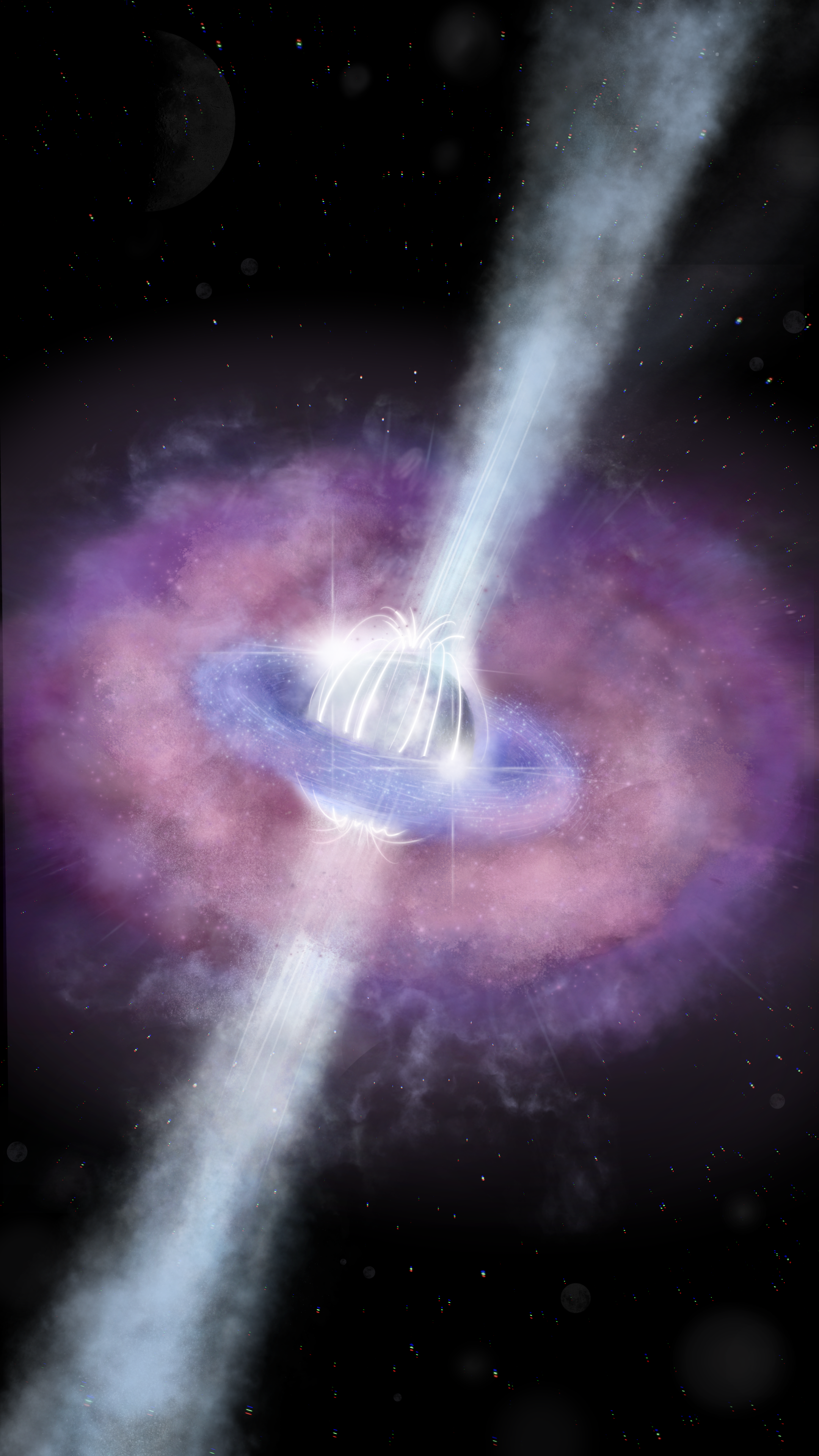The brightest, most energetic explosions in the universe don't come from where we thought
While tracking an incredibly bright gamma-ray burst to its origins, scientists uncovered a hidden explosion that could upend decades of research.

Astronomers have tracked a mysterious, super bright beam of light to a hidden, deep-space explosion 1.1 billion light-years from Earth. This distant explosion, likely caused by the collision of two ultra-dense neutron stars, could upend scientists' understanding of how the universe's brightest, most energetic light is created.
In five new studies published Dec. 7 — four in the journal Nature and one in the journal Nature Astronomy — astronomers followed the path of a long blast of bright light called a gamma-ray burst (GRB) that was detected by multiple telescopes in December 2021.
GRBs are the brightest, most energetic explosions in the universe since the Big Bang. They come in two main varieties: short and long. Short GRBs, which last less than two seconds, are commonly detected in old, quiet regions of space with little star formation. These brief blasts are often attributed to faraway collisions between massive objects, such as neutron stars (the small, dense, collapsed core of a dead star) and black holes. Long GRBs, meanwhile, can last anywhere from 2 seconds to several minutes, and they almost always result from the violent supernova explosions that follow the deaths of giant stars. These are mainly found in younger galaxies with lots of active star formation.
The GRB detected in December 2021 blazed through space for 50 seconds. Using data from multiple telescopes around the world, researchers quickly scoured the region of space from which the GRB had appeared, hunting for the afterglow of a supernova explosion.
Related: Monstrous 'Kilonova' Explosions May Be Showering a Nearby Galaxy in Gold
But each team reached the same perplexing conclusion: There was no evidence of a supernova anywhere near the GRB.
"When we followed this long gamma-ray burst, we expected it would lead to evidence of a massive star collapse," Wen-fai Fong, an assistant professor of astronomy and physics at Northwestern University in Illinois and co-author of the Nature Astronomy paper, said in a statement. "Instead, what we found was very different."
Sign up for the Live Science daily newsletter now
Get the world’s most fascinating discoveries delivered straight to your inbox.
In near-infrared images of the blast site, the researchers found evidence of an incredibly faint object that reached peak brightness within a few days of the GRB's detection before vanishing to almost total darkness. All the available data, from the object's luminosity to its color to its duration, suggested it was a brief but powerful explosion called a kilonova.
"And kilonovas can only come from neutron star mergers," Fong added.

Triggered by violent collisions between massive objects, kilonovas shine with 1% to 10% of the brightness of a typical supernova explosion, according to the European Space Agency. Over the past decade, astronomers have uncovered many kilonovas while probing the hearts of short gamma-ray bursts. This is one of the main lines of evidence linking short GRBs to neutron star mergers.
However, scientists had never seen a long GRB that apparently originated from a neutron star collision. The authors of the new Nature studies have dubbed the 50-second GRB from last December an "oddball" that appears to have been created the same way as a short GRB, only with the duration of a long one.
The exact mechanism behind the GRB's creation remains unclear for now. However, while scouring a catalog of prior gamma-ray observations, the authors of one of the new studies found several more "oddball" GRB candidates with long durations and potential kilonova origins, suggesting this mysterious light in the sky was no flash in the pan.
According to Fong, these findings upend two decades of established knowledge about the origins of GRBs but provide promising new avenues for finally getting to the bottom of their secrets.

Brandon is the space/physics editor at Live Science. His writing has appeared in The Washington Post, Reader's Digest, CBS.com, the Richard Dawkins Foundation website and other outlets. He holds a bachelor's degree in creative writing from the University of Arizona, with minors in journalism and media arts. He enjoys writing most about space, geoscience and the mysteries of the universe.










